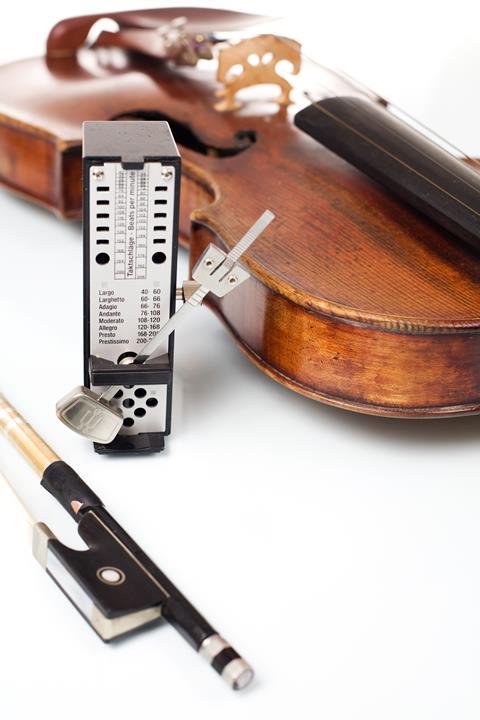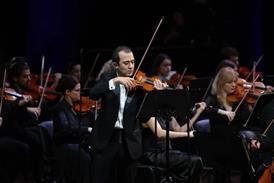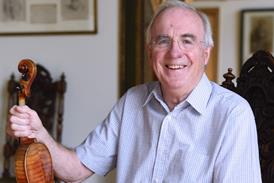Playing movements from instrumental suites without flexibility of tempo would kill the spirit of imagined dance within the music, writes cellist Ulrich Heinen

Discover more Featured Stories like this in The Strad Playing Hub
There are players that assume that Suites and Partitas are to be played with a strict and stable pulse, because they are based on dance. This stems from the assumption that the dance movements of Suites and Partitas could or should be performed as accompaniment to dance. This is actually not true.
The music written for the aristocratic dance - developed at the Court of Versailles - looked completely different from music we find in Instrumental Suites.
Music written for the ‘Danse Noble’ - as it is now often called - was in general rhythmically much simpler than music of Instrumental Suites, because it took on a secondary role to the dominant dance. It moved in longer rhythmical values - like minims (𝅗𝅥) or crotchets (𝅘𝅥), while the dancers performed their steps in complex rhythms of semiquavers (𝅘𝅥𝅯) and demisemiquavers (𝅘𝅥𝅰). The fastest movements of the dancer(s) had no audible equivalent in the accompanying music. This was thought to heighten the awe-inspiring effect of the dance.
To compose music for the accompaniment of dance was therefore not very interesting and not many composers did so. Jean-Baptiste Lully and Marc-Antoine Charpentier were some of the exceptions. François Couperin for instance mostly refrained from writing music for dance.
Instead, Couperin, like many other composers, enjoyed a much more challenging way of dealing with dance. They amalgamated the accompanying music with the musical description of dance and developed the artistic concept of Instrumental Suites (which Couperin called Ordre); a concept in which J. S. Bach succeeded so spectacularly.
In order to write a dance movement as part of an Instrumental Suite, the composer had to work out a choreography in their mind, describe it ‘musically’ and combine it with the music which would have served as accompaniment to this particular dance. The desired effect was to create the image of dance - even though it was absent.
This presents a particular challenge for the performer of Instrumental Suites. They need to read the composition as dance-descriptive and give all of its rhythms the life and momentum of the imagined dance. In particular, the performer needs to understand that the ‘Danse Noble’ very much resembled spoken language in its structural character.
Steps, springs or gestures were linked to form ‘dance-phrases’. Similar to spoken language each phrase was followed by a ‘point of repose’ - like a full stop in a sentence.
To perform a ‘point of repose’ the dancer had observe the following instruction:
1) Briefly reflect on what has been done
2) Stay still for a short moment
3) Mentally prepare what will be done next
The same principle applies to the music of dance movements of Instrumental Suites (which describes the absent dance). If the ‘point of reposes’ are ignored, the music is in danger of becoming meaningless and will resemble ‘wallpaper’, namely something that has no ending and can go on for ever.
The instruction to dancers and musicians in the ballroom would resemble as follows; I imagine the instructor would say to the dancers:
‘For goodness sake you must listen to the music at all times. If you don’t and you are ‘out of step’ with the music, your dancing will be completely worthless, no more worth than gymnastics!’
The instructor would say to the musicians:
‘For goodness sake you must watch the dancers at all times and be ready to adjust to their movements at any moment. These dancers have an immensely difficult task, they are humans, not robots!’
This mutual cooperative arrangement made practical sense.
Because Instrumental Suites describe dance and should create the image of it, the performer has to follow the same approach of flexibility: while the tempo within each phrase should stay the same, there has to be a subtle flexibility of time-giving in between phrases to indicate the point of reposes. Enough time to clarify the ends and beginning of phrases but not as much as to disrupt the ‘flow’ within a dance movement.
To perform a whole dance movement without such flexibility - in absolutely strict tempo - would kill the spirit and meaning of the imagined dance. Hence this is why you shouldn’t practise Suites and Partitas with a metronome - in my view.
Ulrich Heinen studied cello at the Musikhochschule in Cologne with Siegfried Palm and with Leonard Rose at the Juilliard School in New York. From 1984 to 2012 he was principal cellist and section leader with the City of Birmingham Symphony Orchestra (CBSO).
In 1987 he co-founded the Birmingham Contemporary Music Group (BCMG) which subsequently became one of the leading ensembles for contemporary music in the UK. He recorded ‘Kai’ by Marc-Antony Turnage for EMI and Bach’s Cello Suites with 20th Century compositions for solo-cello for Metier.
He teaches at the Royal Birmingham Conservatoire (RBC).
Read: Bach Solo Violin Partitas: Lord of the dance
Read: Pablo Casals and the Bach Cello Suites: Journey to a masterpiece
Read more Featured Stories like this in The Strad Playing Hub
The number one source for playing and teaching books, guides, CDs, calendars and back issues of the magazine.
In The Best of Technique you’ll discover the top playing tips of the world’s leading string players and teachers. It’s packed full of exercises for students, plus examples from the standard repertoire to show you how to integrate the technique into your playing.
The Strad’s Masterclass series brings together the finest string players with some of the greatest string works ever written. Always one of our most popular sections, Masterclass has been an invaluable aid to aspiring soloists, chamber musicians and string teachers since the 1990s.
American collector David L. Fulton amassed one of the 20th century’s finest collections of stringed instruments. This year’s calendar pays tribute to some of these priceless treasures, including Yehudi Menuhin’s celebrated ‘Lord Wilton’ Guarneri, the Carlo Bergonzi once played by Fritz Kreisler, and four instruments by Antonio Stradivari.







































No comments yet